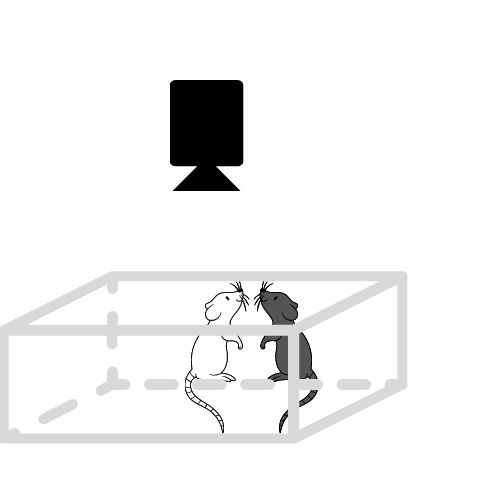
Multi-agent behavior modeling aims to understand the interactions that occur between agents. We present a multi-agent dataset from behavioral neuroscience, the Caltech Mouse Social Interactions (CalMS21) Dataset. Our dataset consists of trajectory data of social interactions, recorded from videos of freely behaving mice in a standard resident-intruder assay. The CalMS21 dataset is part of the Multi-Agent Behavior Challenge 2021 and for our next step, our goal is to incorporate datasets from other domains studying multi-agent behavior. To help accelerate behavioral studies, the CalMS21 dataset provides a benchmark to evaluate the performance of automated behavior classification methods in three settings: (1) for training on large behavioral datasets all annotated by a single annotator, (2) for style transfer to learn inter-annotator differences in behavior definitions, and (3) for learning of new behaviors of interest given limited training data. The dataset consists of 6 million frames of unlabelled tracked poses of interacting mice, as well as over 1 million frames with tracked poses and corresponding frame-level behavior annotations. The challenge of our dataset is to be able to classify behaviors accurately using both labelled and unlabelled tracking data, as well as being able to generalize to new annotators and behaviors.
翻译:多试剂行为模型旨在了解代理商之间的相互作用。 我们从行为神经科学( Caltech Mouse Social互动( CalMS21) 数据集中展示了多试剂数据集。 我们的数据集包含社会互动的轨迹数据, 记录在标准常住- 入侵者实验中自由表现的小鼠的视频中。 CalMS21 数据集是多根行为挑战 2021 和我们下一步的一部分, 我们的目标是将研究多试剂行为的其他领域的数据集纳入其中。 为了帮助加速行为研究, CalMS21 数据集提供了一个基准,用以评估自动行为分类方法在三个环境中的性能:(1) 用于培训大型行为数据集,所有数据都由单一说明者附加说明,(2) 用于风格传输,以学习行为定义方面的内部差异,以及(3) 用于学习受有限培训数据而感兴趣的新行为。 数据集由600万个未贴标签的热切小鼠的跟踪形态组成, 以及超过100万个带有跟踪姿势和相应的框架行为说明的框框框组成。 我们的数据设置的挑战是如何精确地进行分类, 以便将数据定位和行为分类, 将新的行为加以精确地分类。












